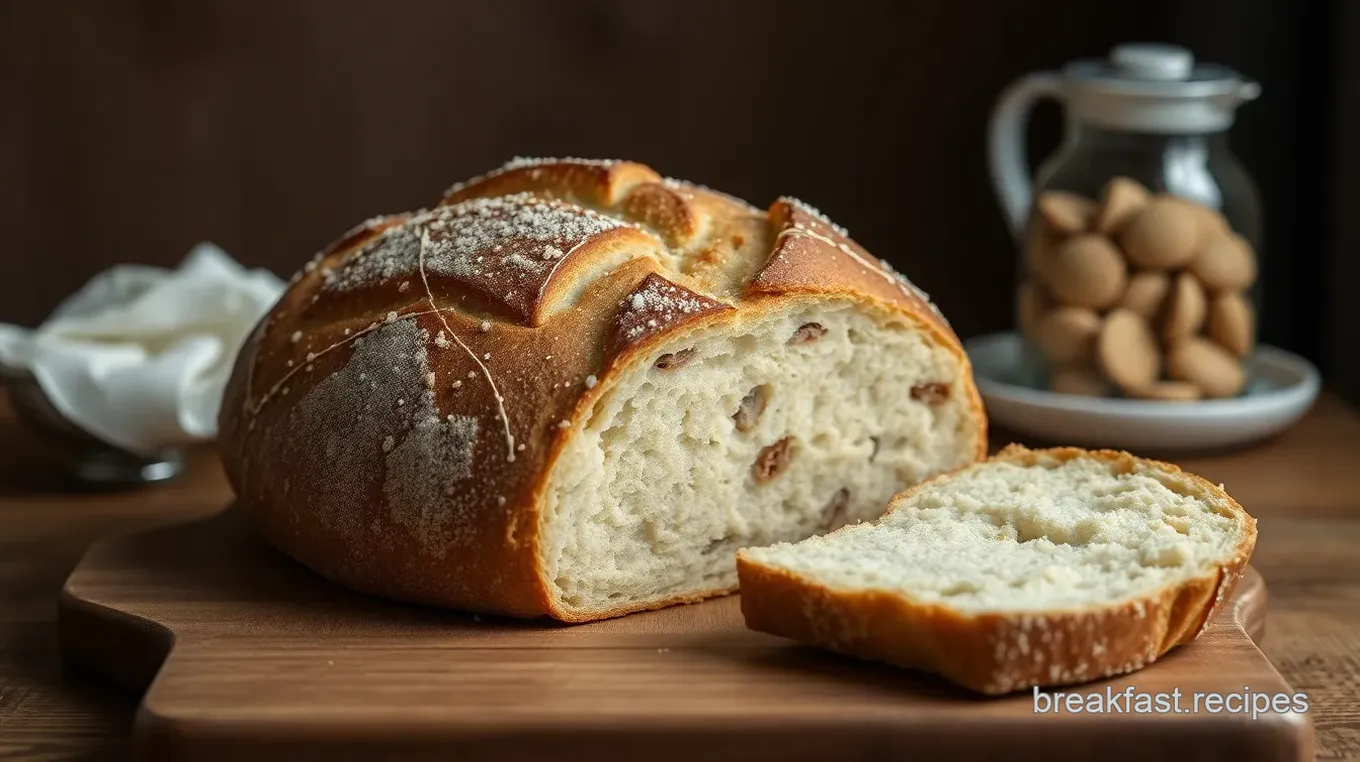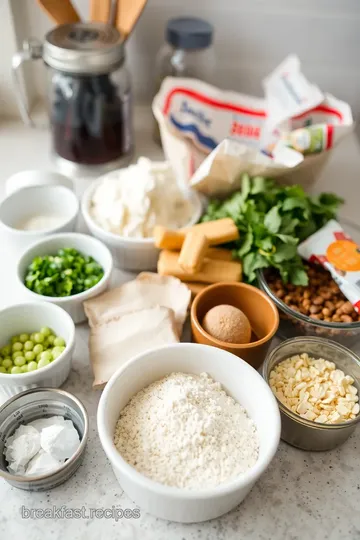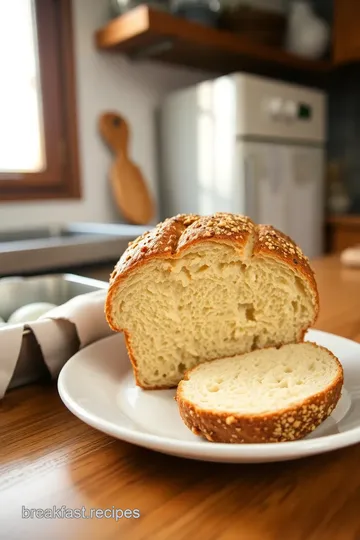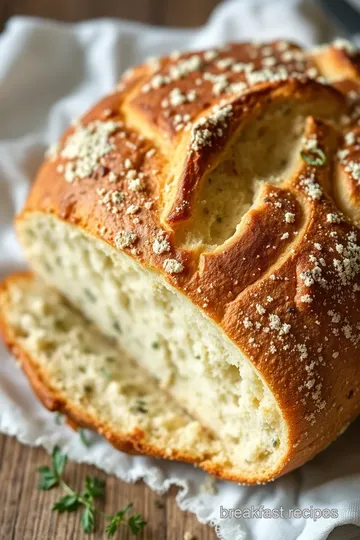Artisan Bread with Poolish
Looking to bake the perfect loaf? This Artisan Bread with Poolish is my go-to for a crusty, flavorful treat that fills your kitchen with amazing aromas. Try it today!

- Welcome to the World of Artisan Bread with Poolish – Crusty & Flavorful
- Your Go-To Essential Ingredients Guide
- Mastering Professional Cooking: Preparation, Technique, and Personal Tips
- Pro Tips & Secrets for Artisan Bread Success
- Perfect Presentation
- Storage & Make-Ahead
- Creative Variations
- Complete Nutrition Guide
- Expert FAQ Solutions
- Recipe Card
Welcome to the World of Artisan Bread with Poolish – Crusty & Flavorful
Have you ever walked into a bakery and inhaled the blissful scent of freshly baked bread? oh my gosh, it’s like a warm hug for your senses, isn’t it? i distinctly remember that moment.
It was a chilly saturday morning, and i strolled into my local bakery, drooling over the golden loaves lined up like they were ready for a fashion show.
That’s when i decided i needed to master the art of baking my own artisan bread with poolish – crusty & flavorful .
Ready to embark on this delicious journey? trust me, your kitchen will thank you!
This bread isn’t just a meal; it’s a tradition. originating from france, the poolish method is like the secret handshake of artisan bakers.
It’s an age-old preferment technique that enhances flavor and creates that divine chewy bread texture we all adore. plus, making bread from scratch? total bragging rights at dinner parties!
Let’s Talk About the Recipe
When i first stumbled across this artisan bread recipe , i was both excited and intimidated. it’s got a medium difficulty level, which means it’s perfect for those of us who can handle a whisk but still make a mess while trying.
You’ll need about 15 minutes of active prep time and then a whole lot of patience while your poolish ferments overnight.
But the wait is so worth it when you witness that gorgeous, crusty loaf come out of the oven.
You’ll find that this recipe is super budget-friendly too! it yields one large loaf, with enough slices to share (or hide away for your midnight snacking).
And as for costs? most of the ingredients are likely things you already have in your pantry. seriously, who knew baking bread at home could be so inexpensive?
Why You’ll Love This Bread
Now, let’s chat about the health benefits. homemade bread is a step up from the store-bought loaves filled with preservatives.
By making your own, you’re in control. this rustic bread is free from artificial additives and filled with simple, wholesome ingredients.
Plus, the nutritional benefits of homemade bread can't be overlooked; you get to choose the flour and add-ins that suit your diet best!
And here’s the kicker: this bread is perfect for every occasion. be it a cozy family dinner, brunch with friends, or even a romantic date night, it fits right in.
Pair it with a hearty vegetable soup, or dig into some cheese and cured meats, and you’re living your best life!
What really sets this bread apart from all those other fluffy loaves you see in stores is the poolish fermentation process .
This technique results in flavorful rustic bread that’s hard to resist. the high hydration dough creates that amazing crust when baked in a dutch oven.
Can i get an amen for that crackling sound when you slice in?
The Transition to Ingredients
Alright, are you ready to get your hands doughy? i thought so! let’s break down what you’ll need to make this artisan bread with poolish – crusty & flavorful .
Gather your tools, because this is the part where the magic happens. don't worry; i'll walk you through every step, so you won't feel lost with your flour-covered hands.
So grab your measuring cups, flour, and a wee bit of yeast, and let's create some culinary magic together!

Your Go-To Essential Ingredients Guide
When it comes to making that perfect loaf of artisan bread with poolish – crusty & flavorful , having the right ingredients is key.
Let's break down everything you need to know about essential ingredients, so you can bake like a pro in no time!
Premium Core Components
First off, measurements matter. for the american side of things, a cup is still a cup, but here's a little tip: 1 cup (120g) flour translates differently if you’re using metric.
Just remember that 240ml water is your friend, whether you're measuring with a kitchen scale or a measuring cup.
Now, what's the secret to great baking? quality! make sure your flour is fresh and you've got a good brand of yeast.
Look for a fine texture and a pleasant smell—don’t sniff too hard, though! a stale bag will definitely affect your artisan bread recipe .
And storage? keep your flour in an airtight container, away from the light; it likes a cool, dry place. as for yeast, it usually hangs around for about 6 months after opening, so don’t let it linger too long!
Signature Seasoning Blend
Next up are the fun bits: seasonings! for your crusty loaf baking, think essential spice combinations that enhance flavor without overwhelming.
A sprinkle of salt is non-negotiable. if you’re feeling adventurous, add garlic powder or even a pinch of cinnamon—crazy, i know! and don't forget your herbs.
Rosemary and thyme pair beautifully with that chewy bread texture we all love.
Flavor enhancers like olive oil or a splash of honey can really jazz things up. embrace those regional variations, too! if you’re in the mood for something italian, throw in some parmesan and basil.
Feeling french? go for a classic herb mix.
Smart Substitutions
Let’s chat alternatives. common alternatives can save the day when you’re missing an ingredient. don’t have bread flour? all-purpose will work, just add a little more.
Watching your carbs? you can try a mix of almond flour and vital wheat gluten for a lower-carb option. and emergencies happen! if you run out of yeast, you can always sour dough it up (just kidding… kinda).
Seasonal ingredients can also add a little zing! Fresh rosemary in spring or pumpkin seeds in the fall? Yes, please!
Kitchen Equipment Essentials
Alright, let’s get to the tools you need. some might call them must-haves, but i’d say they’re your bffs in the kitchen.
You need good mixing bowls, a dutch oven for that perfect crust, and maybe a kitchen scale. honestly, measuring accurately with a scale can be a total game-changer for your bread fermentation process .
If a dutch oven is out of reach, a baking stone will work, but don’t skimp on the parchment paper! you’ll thank me later when the bread doesn’t stick.
Prepare for some dough shaping techniques, ‘cause you'll need a dough scraper and a floured surface. Trust me, floured surfaces prevent drama!
Easy Artisan Bread Recipe Underway
Now that you’re armed with knowledge on artisan bread shelf life and how to nail that crusty bread texture, we’re ready to dive into the recipe! it’s all about that poolish bread technique which not only enhances flavors but also helps with the dough's structure.
Just imagine the scent wafting through your kitchen when that homemade bread with poolish is baking!
So, get your ingredients lined up, and don’t forget to enjoy the process. baking is as much about the journey as it is the destination.
We’ll jump into the step-by-step instructions next, where i’ll guide you through making something truly special. let’s get your kitchen smelling heavenly!
Mastering Professional Cooking: Preparation, Technique, and Personal Tips
When it comes to professional cooking, diving into something like artisan bread with poolish – crusty & flavorful can be quite the adventure.
It’s not just about dumping ingredients together and hoping for the best; nah, there’s a little more to it. with the right bread baking tips , you can create a loaf that’s not just tasty but a work of art!
Essential Preparation Steps
First things first, let’s get into some essential preparation steps. This will set the tone for your baking experience.
Mise en place is your best friend. It means having everything measured and ready before you start. Imagine you're set to embark on a journey without a map! You don’t want to be scrambling for that crucial ingredient halfway through, right?
Next, let’s talk about time management . you’ll want to give your dough plenty of time to rise and develop flavor, especially with that overnight poolish fermentation .
Set aside about 12- 14 hours for that poolish to work its magic. and don’t forget to plan your bake time; it takes about 30- 35 minutes once you slide that loaf into the oven.
Now, organization strategies play a big role too. keep your workspace clean and orderly to avoid any floured chaos. i find that a tidy area helps me focus, and i’m less likely to misplace things.
Safety is also key! keep those hands clean and the surfaces sanitized. don’t get so swept away in the dough that you forget basic kitchen safety.
Sharp knives and hot pans can be sneaky!
Step-by-Step Process
Alright, let’s get down to the nitty-gritty! Here’s your step-by-step process to whip up that crusty loaf.
-
Prepare the poolish: start by mixing 1 cup (120g) of all-purpose flour with 1 cup (240ml) of water and 1/8 teaspoon instant yeast .
Cover and let ferment at room temperature for a solid 12- 14 hours .
-
Make the dough: mix the poolish with another 3 cups (360g) of flour, 1 1/4 cups (300ml) of water, 1 1/2 teaspoons salt , and 1/4 teaspoon of instant yeast until it’s a shaggy mess.
-
Knead it Out: Roll up those sleeves and knead for about 8- 10 minutes till it’s smooth and elastic. It’s a workout, but totally worth it!
-
Bulk Fermentation: Toss the dough in an oiled bowl, cover it, and let that baby rise for 1.5 to 2 hours until it doubles.
-
Shape it Up: Once it’s risen, gently degas and shape the dough into your desired loaf. Cover it and let it rise for about 1- 2 hours .
-
The Big Heat: Preheat that oven to 475° F ( 245° C) with a Dutch oven inside for about 30 minutes .
-
Bake away: slap that dough onto parchment, drop it in the hot pot, and cover it. bake for 30 minutes , remove the lid, then continue baking for another 10- 15 minutes .
Your nose will thank you!
-
Cool Down: Let it cool on a rack for at least 30 minutes . Slicing too soon will ruin that beautiful texture.
Expert Techniques
Alright, let's get fancy with some expert techniques ! the beauty of the poolish bread technique lies in its bread fermentation process .
This method enhances flavor and improves that crunchy, rustic bread crust .
One of the critical steps is making sure your yeast is active. test it in warm water, like around 110° f ( 43° c) .
If it bubbles, you're golden. and don’t fret about being perfect. if your dough feels too sticky, just sprinkle in a tad more flour when needed.
Success Strategies
Finally, let’s chat about success strategies ! Here are a few common mistakes to steer clear of:
- Rushing the fermentation—patience is key! That downtime enhances the chewy bread texture .
- Baking in a cold oven—your bread needs that blast of heat right out of the gate!
- Neglecting the cooling phase can ruin your crust.
Wrapping It Up
So, there you go! from dough shaping techniques to creating that perfect crust, remember that the key to success is embracing the process.
You’ll be crafting delicious homemade bread with poolish like a pro in no time. and if you’re feeling adventurous, don’t be shy to experiment with variations; maybe toss in some herbs or try a cheese and herb bread for a twist!
We’ll dive into additional information next about how to maintain your loaf or try different recipes. So stay tuned!

Pro Tips & Secrets for Artisan Bread Success
When diving into artisan bread with poolish – crusty & flavorful , the journey is as rewarding as the end product.
Here are some of my tried and true tips to make your baking experience a slam dunk!
Chef's Personal Insights
First off, the poolish technique is brilliant. it gives your bread that deep flavor and chewy bread texture we all crave.
Remember, you can’t rush this—good things take time. a night of rest makes a world of difference. seriously, let that poolish hang out for 12- 14 hours .
The more patience you have, the tastier your loaf will be!
Time-Saving Techniques
I get it—time is precious. if you're in a hurry, try making your poolish before bed and then mixing your dough first thing in the morning.
Trust me , by the time you have your coffee, your dough will already be resting for its first rise.
Flavor Enhancement Tips
Want a flavor bomb? toss in some fresh herbs , like rosemary or thyme, when you mix your dough. or, go wild with a pinch of garlic powder or even some grated cheese for that savory kick.
Presentation Advice
Don’t just stop at making the best bread ever; present it well! nowadays, plating techniques can really elevate your bread game.
Serve this beauty on a rustic wooden board and sprinkle it with some sea salt for that pinterest-worthy look.
Perfect Presentation
You've put in the effort; now let's make your bread sing visually!
Plating Techniques
Slice it up unevenly for that rustic feel ; trust me, it adds character. You want your loaf to look as good as it tastes!
Garnish Ideas
Think about garnishes! A sprinkle of fresh herbs or even a drizzle of olive oil over the slices can make it pop!
Color Combinations
Mixing a bright green parsley or basil next to that golden crust? Instant eye candy. Color is key, folks!
Visual Appeal Tips
When serving your Artisan Bread , consider an assortment of dips. An olive oil blend with balsamic is fantastic. But don’t forget to include a few cheese options for that real crowd-pleaser effect!
Storage & Make-Ahead
Let’s be real—life happens, and leftovers are inevitable. Here’s how to make the most of your Artisan Bread with Poolish .
Storage Guidelines
It’s best to keep your bread in a paper bag at room temp. Avoid plastic —that will just turn your crust soft and sad. No one wants that!
Preservation Methods
If you've made too much (or let’s be honest, if you want to save some for later!), slice your bread and freeze it. Just make sure you wrap it nice and tight.
Reheating Instructions
To revive your sandwich or toast, pop it in a toaster or a 425° F oven for about 5 minutes. It’ll be like magic!
Freshness Duration
Your artisan masterpiece will last about 2-3 days at room temp, and if frozen, it’s good for about a month. Just keep that flavor in mind—it’s all about maximizing freshness!
Creative Variations
Get adventurous with your baking!
Flavor Adaptations
How about some malted beer in your dough for a unique twist? The possibilities are endless with this easy artisan bread recipe .
Dietary Modifications
Want a healthier version? Swap out a portion of the all-purpose flour for whole wheat . Your taste buds may not tell much difference!
Seasonal Twists
Change it up by adding dried fruits or nuts for the fall. Think cranberries and walnuts for a seasonal delight!
Regional Variations
Want to go Mediterranean? Toss in some feta cheese and black olives for a pie-like bread that’ll vy for attention at your dinner table.
Complete Nutrition Guide
Curious about what’s in your bread? Here’s a breakdown.
Detailed Breakdown
One slice packs about 180 calories . Not too shabby for a slice of heaven, right?
Health Benefits
Besides that glorious taste, baking at home gives you control. You know what's in your bread, and that’s a big win!
Dietary Considerations
This recipe can easily be adapted for gluten-free diets. Just use a gluten-free flour blend, and make sure to check your yeast!
Portion Guidance
It’s easy to lose track while slicing—aim for 8-12 slices . Controlled portions mean you enjoy your bread without the guilt.
Expert FAQ Solutions
Worried about messing up? No sweat! Here are some common concerns.
Common Questions
What if my dough doesn't rise? Don’t panic! It might be your yeast. Always use fresh yeast if you can.
Troubleshooting Guide
Not getting a good crust? Your oven may not be hot enough. Make sure you preheat it with that Dutch oven for at least 30 minutes.
Success Tips
Always let your dough cool before slicing! A hot loaf will lead to a gummy texture—nobody wants that!
Variations Explained
Feel free to get creative! Remember, the base of this recipe is flexible, whether you want to stack on flavors or try different techniques.
In conclusion, baking your own artisan bread with poolish not only fills your kitchen with enticing smells, but it also fills your heart (and tummy!) with joy.
So whether it’s for a special occasion or just a tuesday afternoon, roll up those sleeves and let’s get baking! trust me, your taste buds will thank you.
Happy bread-making, friends!

Artisan Bread with Poolish Card

⚖️ Ingredients:
- 1 cup (120g) all-purpose flour (for the poolish)
- 1 cup (240ml) water (room temperature, for the poolish)
- 1/8 teaspoon instant yeast (for the poolish)
- 3 cups (360g) all-purpose flour (for the dough)
- 1 1/4 cups (300ml) water (room temperature, for the dough)
- 1 1/2 teaspoons salt
- 1/4 teaspoon instant yeast (for the dough)
🥄 Instructions:
- Step 1: In a mixing bowl, combine the flour, water, and yeast for the poolish. Stir until fully incorporated; cover and let ferment at room temperature for 12-14 hours.
- Step 2: In a large bowl, combine the poolish, additional flour, water, salt, and yeast for the dough. Mix until a shaggy dough forms.
- Step 3: Transfer to a floured surface, kneading for about 8-10 minutes until smooth and elastic.
- Step 4: Place in an oiled bowl; cover and let rise for 1.5 to 2 hours until doubled in size.
- Step 5: Gently degas the dough and shape it into a round or oval loaf. Place it seam-side up in a floured proofing basket or bowl; cover and let rise for 1-2 hours.
- Step 6: About 30 minutes before baking, preheat the oven to 475°F (245°C) with a Dutch oven inside.
- Step 7: Transfer the dough onto parchment; carefully place it in the hot Dutch oven. Cover and bake for 30 minutes, remove the lid, and bake for an additional 10-15 minutes until golden brown.
- Step 8: Let the bread cool on a wire rack for at least 30 minutes before slicing.
Previous Recipe: How to Make Sweet Corn Upma - Quick & Tasty Dish for Breakfast
Next Recipe: Best Blend Oats Smoothie Healthy & Tasty: 5 Easy Variations for Your Mornings!
